Guide to Minimalist Interior Design
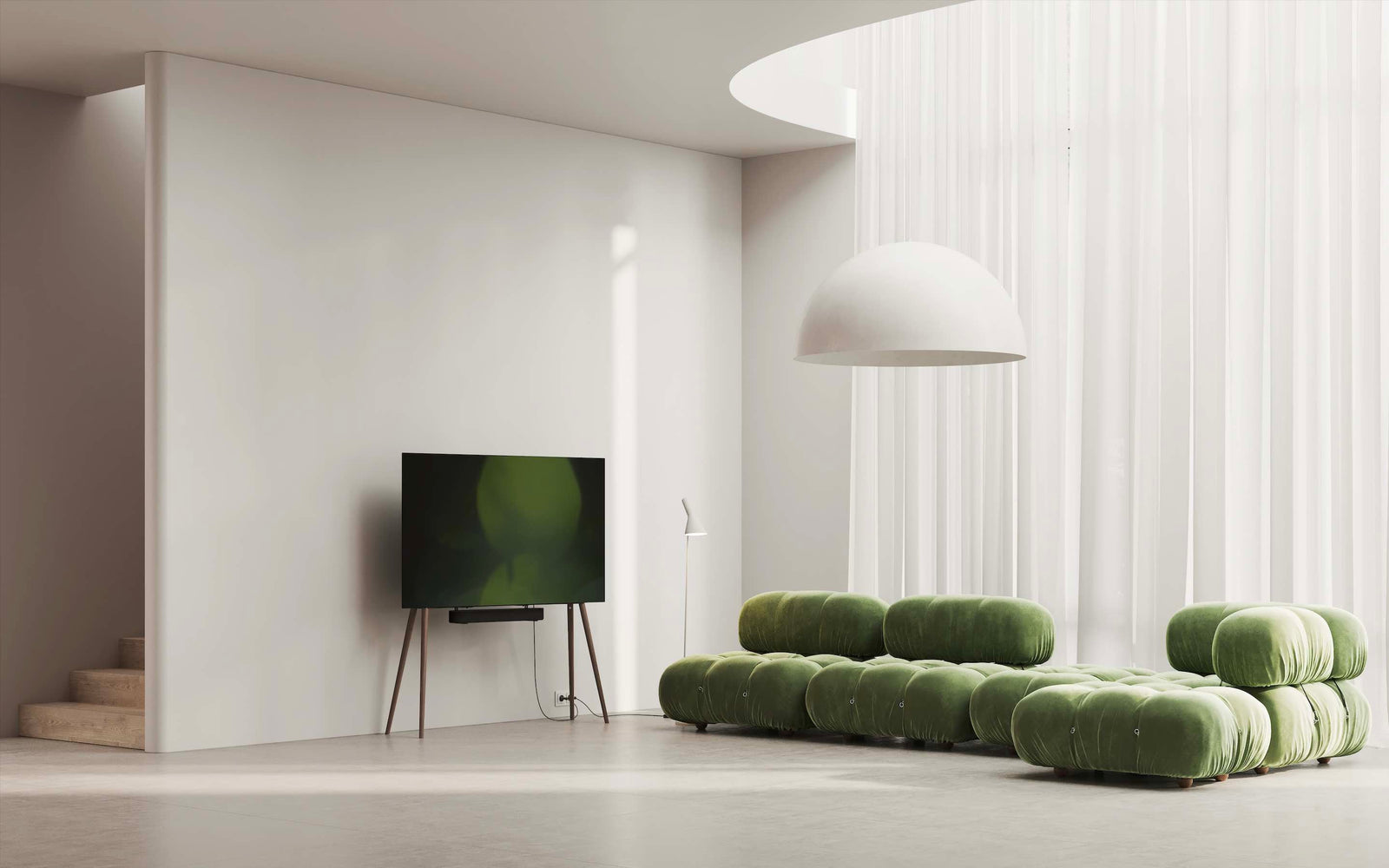
Considering minimalist interior design for your home? In minimalist spaces, every element has a purpose. They create spaces that are not just pretty but also very useful. In this article, we’ll guide you on how to strip down to the essentials. You'll curate spaces that show calmness and minimalist charm. And, you won't sacrifice personal style and comfort.
Key Takeaways
- Minimalist interior design is a lifestyle choice. It focuses on simplicity, functionality, and open spaces. It is influenced by various cultures and historical art movements. Minimalism facilitates ease of movement and a clutter-free environment.
- Monochromatic color schemes use shades of one color. They primarily use neutrals. They are key to minimalist design. Monochromatic colors are simple. They improve the use of natural light and allow for singular accents or textures to add depth and visual comfort.
- Minimalist spaces prioritize eco-friendly and sustainable practices by selecting durable, high-quality materials. Also, buying multi-functional furniture encourages mindful consumption. It reduces waste and optimizes light and space for efficiency.
The Importance of Minimalist Design
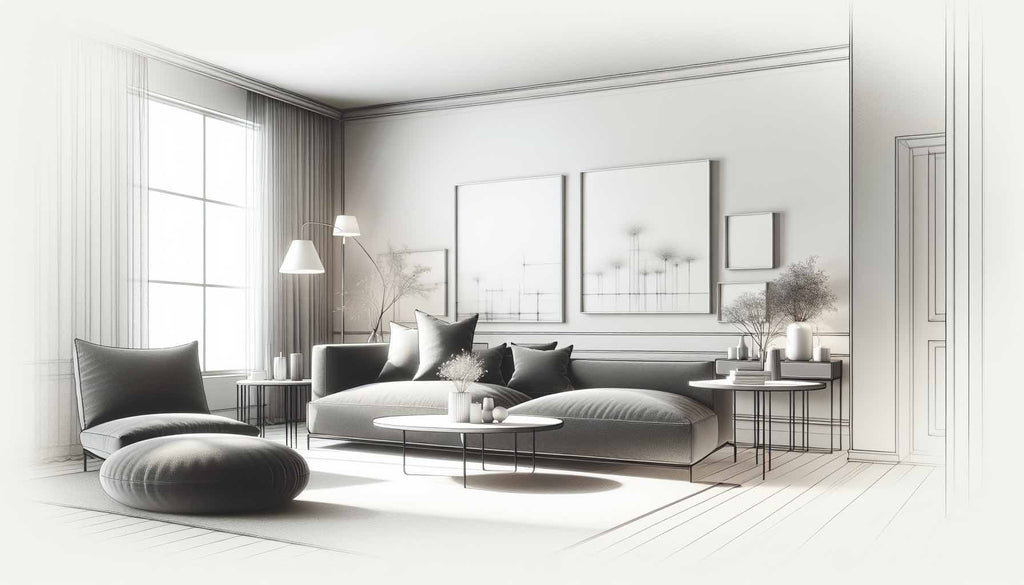
Minimalist design has become very popular as it represents a lifestyle of living only with the essentials. This aesthetic discourages unnecessary consumption and promotes deliberate and mindful living. The minimalist interior design spins around the simplicity. Each element in the minimalist design space serves a purpose, contributing to the room’s overall functionality.
The minimalist interior design style is often called the minimalist style. It was influenced by many cultures, including nomadic communities. They adopted simplicity out of necessity. Artists such as Frank Stella and Agnes Martin were important after World War II. They helped develop minimalist art, which influenced minimalist design. Therefore, the minimalist home is not just aesthetically pleasing. It also optimizes room layouts through the furniture to create an open and spacious feel. The minimalist interior design style stands out as a popular choice for many homeowners and interior designers alike.
A clean, neat, and uncluttered space is fundamental to minimalist interior design. It fosters a serene atmosphere. An interior designer or design firm can help. They specialize in minimalist interiors and can help achieve this desired look.
Monochromatic Color Schemes in Minimalist Interior Design Style
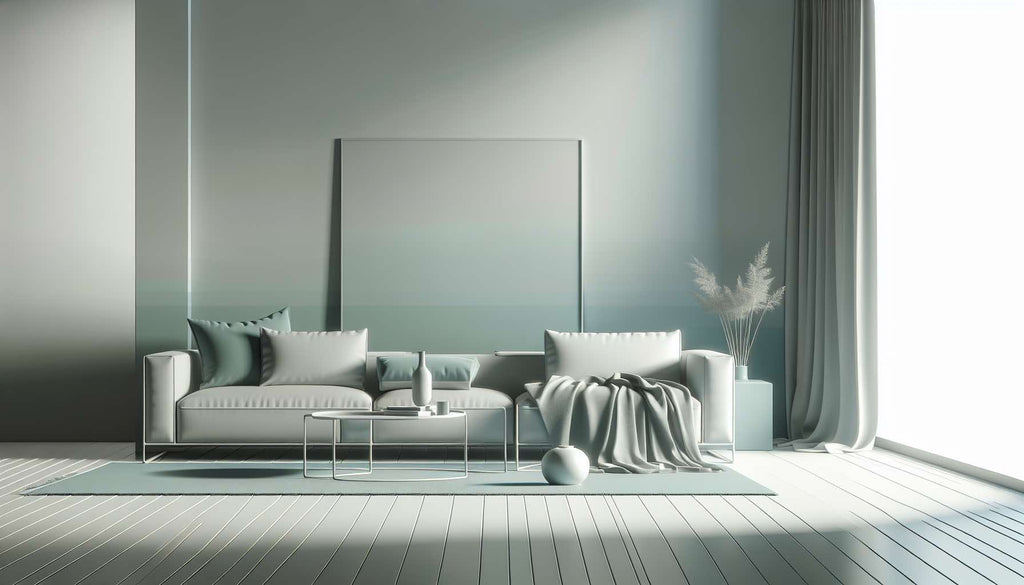
Using a monochromatic color palette is a fundamental feature of a minimalist design aesthetic. They use many shades, tints, and tones of one color. These schemes bring out the space's elegance and simplicity. Use a simple palette of up to three shades. Add in textures and patterns. This mix can make a unified and comfy space.
Minimalist color palettes typically contain neutral colors such as white, beige, and gray. This approach is beautiful. It allows for a single accent color to be added for vibrancy. And, it keeps minimalist sensibilities. This approach complements the minimalist decor. It also adds to the calm and soothing atmosphere in the minimalist home.
Highlighting Clean Lines and Geometry
Simplicity is the cornerstone of minimalist design, often characterized by:
- Clean lines
- Smooth curves
- Uncomplicated shapes
- Flat planes
These elements work together to make bold statements. They emphasize the key nature of each item, adding to the minimalist design style.
Another critical aspect of minimalist design is the use of geometric patterns. Repeating geometric shapes in design elements creates a unified and balanced space. They bring order and harmony. This is where function meets simple beauty. It's seen in sleek design elements. For example, wall-mounted storage racks and vertical storage solutions. These not only organize items but also accent the minimalist appeal.
Purposeful Furniture Choices
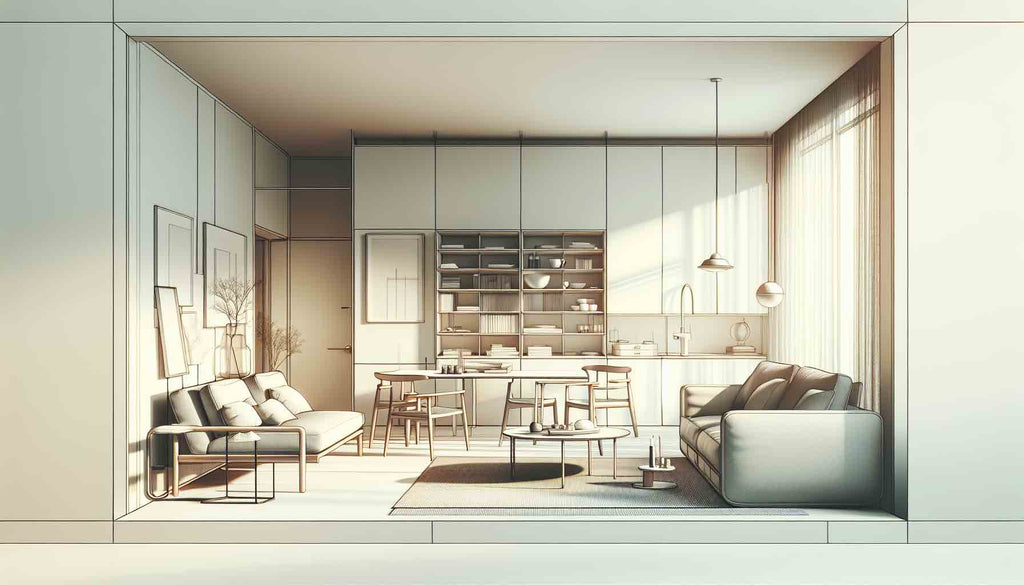
In minimalist design, the functionality of furniture is paramount. The minimalist home prioritizes furniture that is not only functional but also multi-functional. This approach maximizes utility and maintains minimalist principles. Examples of such furniture include:
- Convertible sofas
- Expandable dining tables
- Storage ottomans
- Modular shelving systems
- Minimalist TV Stands
These pieces blend form with utility, making them highly suitable for minimalist spaces.
Furniture in a minimalist setting should be arranged to foster an open and uncluttered space. This is achieved through simplicity and a focus on functionality. Strategically place furniture with space between. It improves traffic flow and visual appeal in small spaces. This shows the importance of spatial harmony in minimalist design.
Choosing timeless furniture pieces is vital for minimalist design. They last longer. They also save money over time. This affirms the minimalist principle of careful consumption. Minimalist design selects furnishings for their function and practicality. They have no excess decorations, accessories, or features.
Harnessing Natural Light
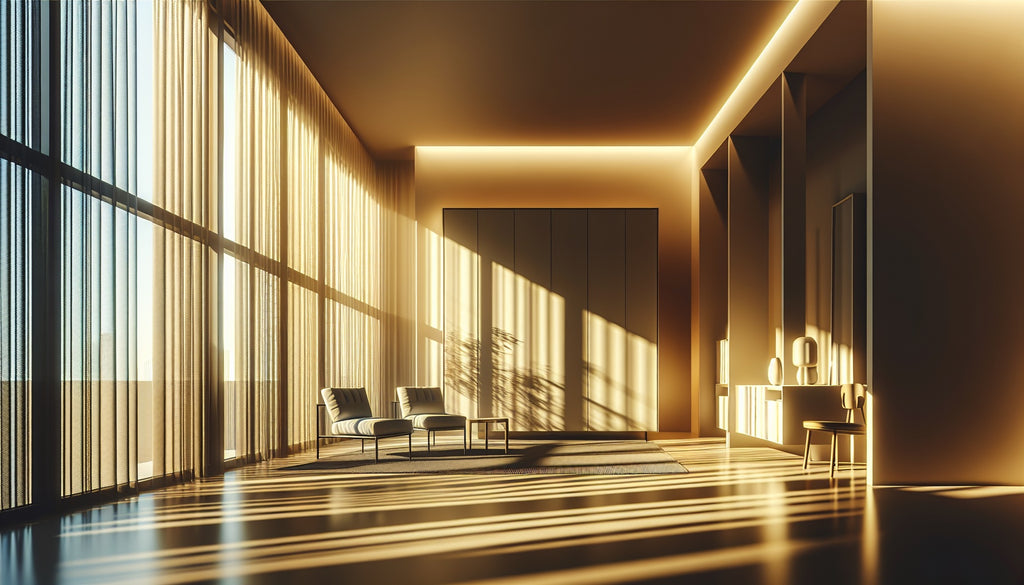
Natural light is key in minimalist design. It creates a spacious and open atmosphere that is vital to minimalism. Monochromatic color schemes are common in minimalist design. They boost the reflection and amplification of light. This adds to the openness of spaces. This focus on natural light makes the space warm and inviting. It also improves mood and reduces eyestrain. So, it helps wellbeing.
Harnessing natural light in minimalist design offers several benefits, including:
- Enhancing energy efficiency by reducing the need for artificial lighting
- Creating an open and airy feel in spaces like minimalist kitchens
- Use reflective surfaces. They can be light-colored walls and mirrors. They distribute natural light well.
- Incorporating features like skylights to bring in more natural light
These strategies can help maximize the use of natural light in minimalist spaces.
Incorporating Natural Materials
Minimalist design uses warmth and texture. It gets them from natural materials like wood, stone, and linen. These materials create a welcoming and natural feel. Wood can be added to minimalist interiors practically. This is done through rough wood cabinetry. It adds depth and a tactile element to the kitchen space.
Raw materials like brick and stone bring the outdoors into minimalist spaces. They also fit the aesthetic and provide a textured backdrop. This use of natural materials enhances the look. It also aligns with sustainability. This makes minimalist design a greener choice.
Decluttering and Organization
One of the defining characteristics of a minimalist home is its lack of clutter. This starts with decluttering. You get rid of extra items to make clean, serene spaces. To be minimalist, leave empty spaces. They show off the key items.
Keeping a tidy, minimalist home needs regular decluttering. Belongings must have specific areas. The minimalist design relies on carefully selected storage solutions. These include built-in cabinets and hidden compartments. They help keep an uncluttered aesthetic. By organizing your space, you can reduce clutter. Allocate specific places for each item. This will foster a minimalist environment.
Accentuating Negative Space
Negative space is the purposely vacant area in a room. It has a big role in minimalist design. It improves the room's looks and function. Embracing it is key to balance and harmony in minimalism. Using negative space strategically makes important room elements stand out. It also boosts the space's visual clarity.
Empty space also helps prevent a room from feeling crowded. This fosters a calm atmosphere of openness and relaxation. Using negative space well needs attention to proportions and scale. They ensure a nice look. You can achieve this through trying and adjusting.
Personalizing Minimalist Spaces
The minimalist design emphasizes simplicity and functionality. But it doesn’t mean your space can’t reflect your taste and personality. Carefully pick statement pieces and unique accents. They let you balance minimalism with personal touches. Some ideas for injecting color and individuality into your minimalist space include:
- A unique piece of artwork
- A sculptural vase
- Transform functional items into wall art. For example, skateboard decks or clear acrylic racks for surfboards.
These accents can add a touch of personal style to your minimalist space.
Textures are also integral in adding a personal touch to minimalist spaces. Introducing various textures, such as:
- plush rugs
- throw blankets
- leather
- metals
They can create depth in minimalist interiors. Even in a simple minimalist bedroom, adding unexpected elements is fun. Playful art pieces can add a touch of personal style.
Sustainable Living with Minimalism
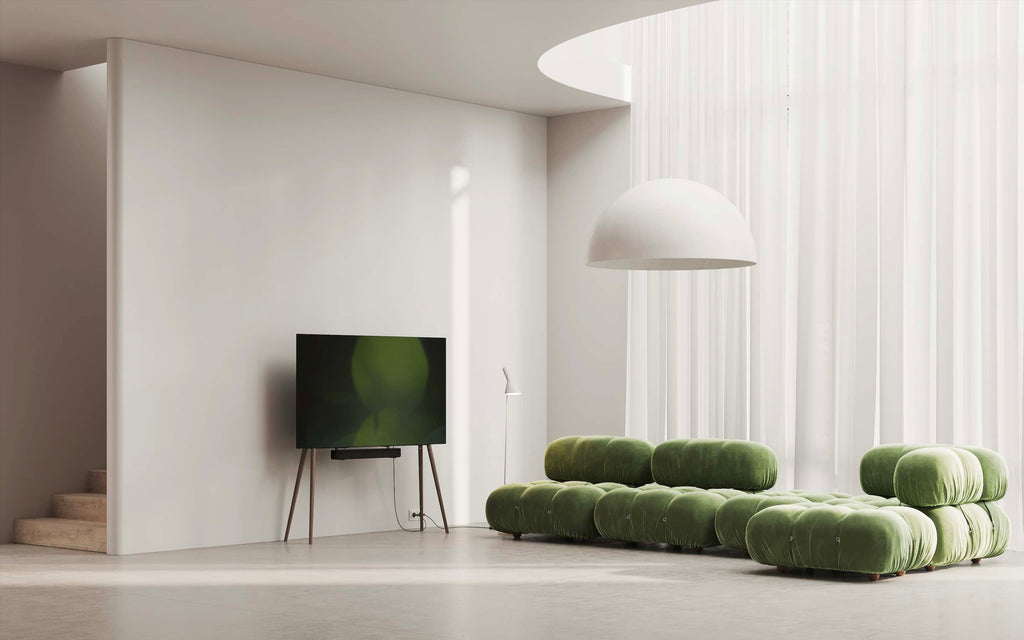
Minimalist design goes beyond aesthetics; it also encourages sustainable living. Minimalist design prioritizes quality and durability. It encourages mindful consumption. This leads to less waste from infrequent replacements. The emphasis is on buying only needed items. This reduces demand and resource use in production. It makes minimalist living an eco-friendly choice.
Using high-quality and natural materials in interior design has two benefits. They lend a timeless look and help save non-renewable resources. Also, fewer possessions in a minimalist lifestyle mean less need for cleaning and maintenance. This saves energy and resources. Simple design supports sustainable living. It encourages practices with a small environmental impact. Some key principles of minimalist design include:
- Using neutral colors and simple patterns
- Incorporating natural light and open spaces
- Choosing multi-functional furniture
- Eliminating clutter and unnecessary decorations
- Emphasizing clean lines and minimal ornamentation
By following these principles, you can create a sustainable and visually appealing living space.
Room-by-Room Minimalist Transformations
Turning your home into a minimalist space won't happen at once. It is a journey that needs careful planning and choices. The transformation involves:
- Decluttering
- Efficient storage solutions
- Purposeful furniture choices
- Creating serene and tranquil environments
Minimalist Kitchen Makeover
The kitchen and dining room are the heart of the home. Making them minimalist and functional can enhance cooking and dining. Here are some tips to achieve a clutter-free and organized kitchen:
- Maximize storage by extending cabinetry to the ceiling.
- Opt for a black and white color palette for a minimalist look.
- Add occasional pops of color through appliances and dishes to create visual interest.
- Keep countertops clear of unnecessary items.
- Use drawer dividers and organizers to keep utensils and small items organized.
- Install open shelving to display dishes and cookware in a stylish way. By following these tips, you can create a balanced and calming environment in your minimalist kitchen.
Mixing white finishes with natural wood creates balance. It makes a calm space in a simple kitchen. And let’s not forget about the lighting. Bright pendant lights provide enough light for a minimalist kitchen without extra decor. They enhance the minimalist vibe.
Serene Living Room Spaces
A simple design in the living room can create a calm space. It is for unwinding and socializing. A large sofa is a key piece of furniture. It can organize a minimalist living room and cut visual clutter. Introducing symmetry in the arrangement of furniture can also enhance the minimalist aesthetic of a living room.
The open-plan design creates flow in the living room. It allows for distinct zones while keeping the minimalist vibe. Some stylish storage solutions serve dual purposes. They work for both storage and as decor. They are perfect for a minimalist living room. Few examples:
- Wall-mounted shelves
- Storage ottomans
- Built-in cabinets
- Floating shelves
- Coffee tables with hidden storage
These storage options will keep white walls in your living room clutter-free. They will also add to the overall look.
Tranquil Bedrooms
Creating a minimalist bedroom is about making a calm sanctuary. It's for relaxing and recharging. This can be done by emphasizing clean lines and symmetry. These define the basis of a minimalist bedroom design.
Simple shapes and fancy bedding make a minimalist bedroom feel like a serene sanctuary. It offers a calming retreat at the end of the day.
Streamlined Bathrooms
People often overlook the bathroom. But, it's an important space. It can benefit from a minimalist design. A minimalist bathroom has efficient storage. It has neutral tones and sleek fixtures. They make for a clutter-free and calming space. For instance, freestanding bathtubs are becoming a focal point in modern bathroom designs. They give them an exclusive, spa-like atmosphere.
Geometric shapes in tiles are gaining popularity. They offer many colors, materials, and finishes for a personalized bathroom. Minimalist aesthetics still influence bathroom designs. They use slimline wall sconces to give gentle light.
Summary
Minimalist interior design is more than just a style. It’s a lifestyle choice that values simplicity, usefulness, and purposeful living. Each element in minimalist design contributes to creating calm spaces. The tips range from picking monochromatic colors to choosing purposeful furniture. They also include using natural light, adding natural materials, and organizing your space.
Minimalist principles are beneficial for creating pretty spaces. They also promote sustainable living and mindful consumption. A coffee table can go in the kitchen, living room, bedroom, or bathroom. Each room can become a minimalist space. It will offer tranquility and serenity. So, are you ready for minimalist living and create your own serene spaces?
Frequently Asked Questions
What is minimalist in interior design?
Minimalist interior design prioritizes essential elements. It focuses on core function, limited materials, neutral colors, simple forms, and few decorations. These traits aim to achieve elegance.
Why is minimalist interior design so popular?
Many people like minimalist interior design. It creates a calm and soothing environment. This offers a break from busy lives. It promotes mindfulness and intentional living. This philosophy aligns with the increasing desire to simplify and declutter living spaces.
How does minimalist design use color?
Minimalist design uses monochromatic color schemes. They mainly use neutral colors like white, beige, and gray. A single accent color can be added for vibrancy. This creates a clean and streamlined aesthetic.
What role does natural light play in minimalist design?
Natural light is crucial in minimalist design. It creates a spacious and open atmosphere. It also promotes energy efficiency.
How can I personalize my minimalist space?
To personalize your minimalist space, pick statement pieces and unique accents. They should reflect your taste and personality. This will add a personal touch to your space.









